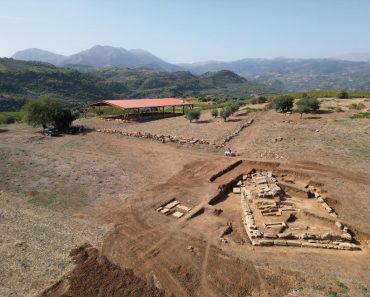An ongoing recovery operation off the coast of Sicily, near the ancient city of Gela, has unearthed a remarkable find: orichalcum, a metal alloy linked to the legendary city of Atlantis.
The shipwreck, known as “Gela II,” dates back to the 5th century BCE and was discovered by divers near Bulala in 1980.
The wreck, located approximately 1,000 feet underwater, is exceptionally well-preserved. While underwater archaeologists first explored the site in the 1990s, significant discoveries, including 86 orichalcum ingots, were made during expeditions in 2015 and 2017.

Orichalcum, from the Greek “oreikhalkos” (mountain copper), has captivated imaginations for centuries. Classical texts, such as Plato’s Critias, describe it as a precious metal second only to gold, used to adorn the Temple of Poseidon and Cleito in Atlantis, giving the walls a reddish glow. Analysis of the Gela II ingots reveals a composition of 75-80% copper, 14-20% zinc, and trace amounts of nickel, lead, and iron.

According to Sebastiano Tusa, former superintendent of Sicily’s Sea Office, these ingots likely originated from Greece or Asia Minor. He emphasized the find’s significance, stating that while orichalcum was known from ancient texts and a few ornamental objects, the discovery of these ingots is unprecedented.
The Gela II vessel, a 50-foot-long, 16-foot-wide merchant ship, once transported goods across the Mediterranean. In addition to the orichalcum, archaeologists have recovered Corinthian helmets, amphorae, pottery, and personal belongings.
The current 270-day recovery operation, a collaboration between the Superintendence of the Sea of the Sicilian Region and specialized companies Atlantis and Cosiam, involves dismantling and restoring the ship’s timber remains. Following restoration at the Superintendent for Cultural Property of Caltanissetta, these will eventually be displayed at the Archaeological Park of Gela.
This project follows the successful “Gela I” excavation in the same area. The artifacts from Gela I are currently exhibited in a museum in Bosco Littorio, and authorities hope Gela II will generate similar cultural and tourist interest. Francesco Paolo Scarpinato, Sicilian regional councillor for Cultural Heritage, noted these finds’ importance for reconstructing Gela’s history.







